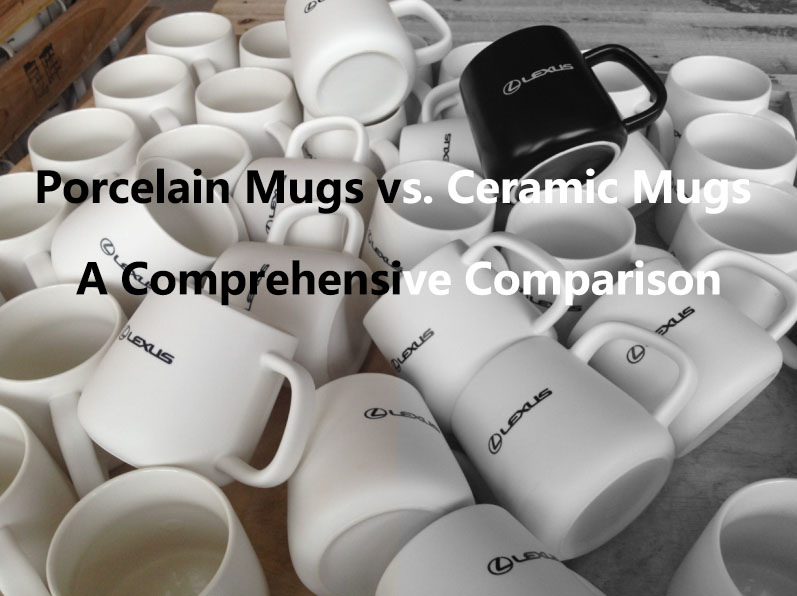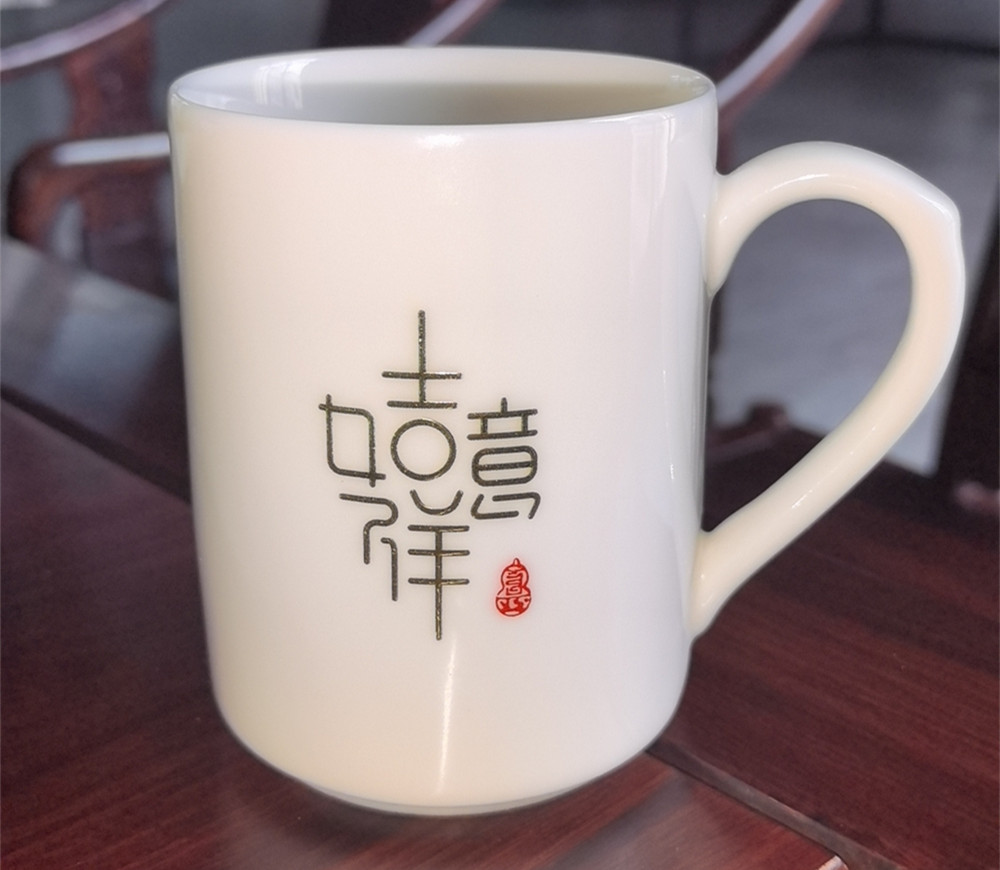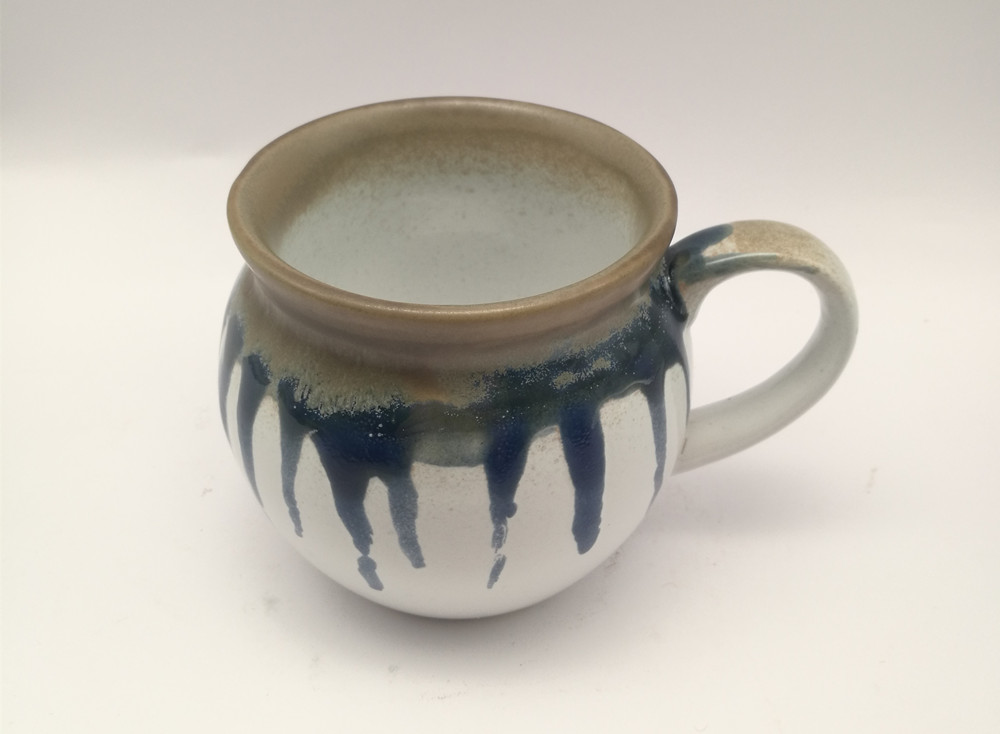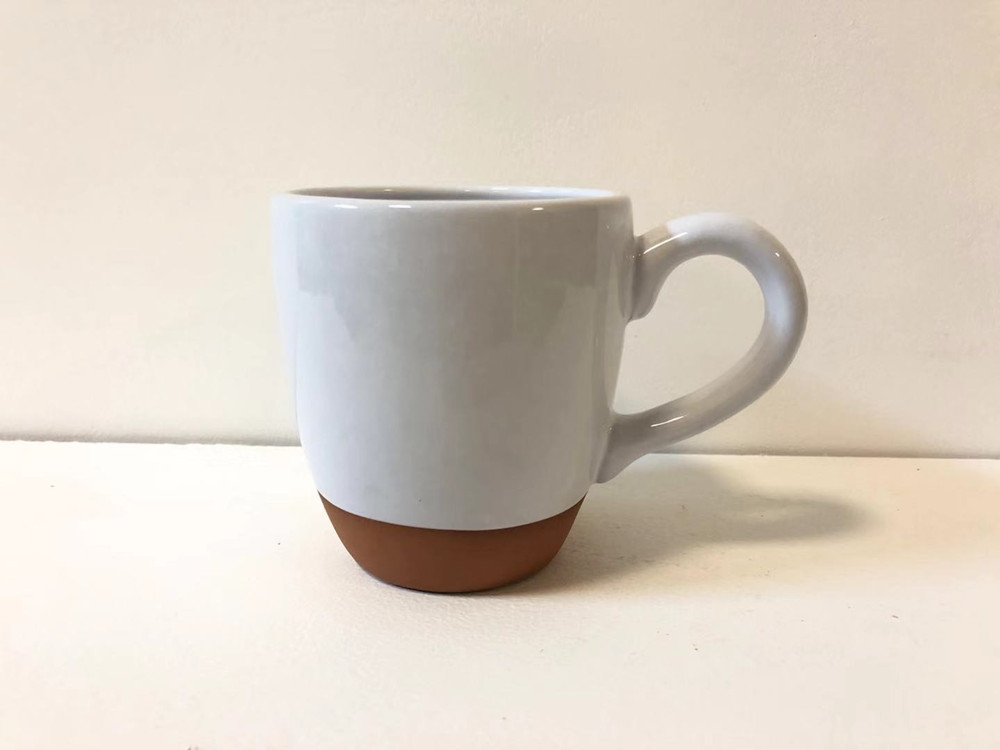Porcelain Mugs vs. Ceramic Mugs: A Comprehensive Comparison
Time of issue: 2024-02-05 16:12:50
When it comes to choosing the perfect mug for your morning coffee or tea, the debate between porcelain and ceramic mugs has been ongoing for quite some time. Each material has its own unique characteristics, advantages, and drawbacks that cater to different preferences and needs. In this comprehensive guide, we will explore the differences between porcelain and ceramic mugs, helping you make an informed decision about which one is better suited for your daily caffeine fix.
Introduction
Mugs are an integral part of our daily lives. They serve as vessels for our favorite beverages and often have sentimental value attached to them. Whether you're an avid coffee connoisseur, a tea enthusiast, or just need a reliable vessel for your daily dose of hydration, the choice between porcelain and ceramic mugs can significantly impact your drinking experience.
In this article, we'll delve into the composition, appearance, durability, and practical uses of porcelain and ceramic mugs to help you understand the distinctions between the two and make an educated decision when choosing your next mug.
Porcelain Mugs

Composition
The exact composition of porcelain varies depending on its use and the manufacturer, although one common ingredient is kaolin, a soft white clay that is combined with other ingredients like bone ash, sand, magnesium, quartz, and feldspar. Reports How Stuff Works, the mixture is then shaped and fired in high heat to become hard. If that sounds a lot like how ceramics are made, you're correct. Porcelain is technically a specialized subset of ceramics, both are made of clay and kiln-fired, but porcelain uses different raw materials, glazes, and has higher density and is fired at a higher temperature of around 2,250 degrees Fahrenheit. That makes porcelain more durable and more water resistant than ceramics, UNESCO notes (and Home Depot seconds!)
Porcelain mugs are crafted from a specific type of ceramic clay called kaolin, along with other materials like feldspar and quartz. The combination of these ingredients creates a fine, delicate, and translucent material. Porcelain is fired at extremely high temperatures, resulting in a non-porous, glass-like surface that is both smooth and elegant.
Appearance
Porcelain mugs are renowned for their exquisite appearance. They typically have a pure white finish, which is both glossy and smooth to the touch. This translucency allows light to pass through, giving porcelain mugs a sense of refinement and luxury that is hard to match.
Durability
While porcelain mugs may appear fragile due to their delicate appearance, they are surprisingly durable. Their dense and non-porous structure makes them highly resistant to chipping, staining, and absorbing odors. They can also withstand high temperatures, making them safe for the microwave and dishwasher.
Practical Uses
Porcelain mugs are the preferred choice for formal occasions, special events, and upscale dining establishments. They are perfect for serving high-quality teas, gourmet coffees, and hot chocolate. The elegant appearance of porcelain mugs enhances the overall drinking experience and adds a touch of sophistication to any table setting.
Ceramic Mugs
Composition
According to Wiki, A ceramic is any of the various hard, brittle, heat-resistant, and corrosion-resistant materials made by shaping and then firing an inorganic, nonmetallic material, such as clay, at a high temperature. Common examples are earthenware, porcelain, and stoneware.
Here we exclude porcelain mugs and focus on stoneware mugs and earthenware mugs:
Stoneware Mugs

Composition
According to Britannica, Stoneware, pottery that has been fired at a high temperature (about 1,200° C [2,200° F]) until vitrified (that is, glasslike and impervious to liquid). Although usually opaque, some stoneware is so thinly potted that it is somewhat translucent. Because stoneware is nonporous, it does not require a glaze; when a glaze is used, it serves a purely decorative function. There are three main kinds of glaze: lead glaze, salt glaze, and feldspathic glaze (the same material used in the body and glaze of porcelain).
Appearance
Stoneware mugs are celebrated for their rustic and earthy appearance. They often feature natural, muted colors and a matte finish that complements their handmade feel. The surface of stoneware mugs can vary, with some showcasing textured or glazed exteriors that add character to each piece.
Durability
One of the standout features of stoneware mugs is their durability. They are exceptionally resistant to chipping, cracking, and absorbing odors or stains. Stoneware mugs can safely handle both hot and cold beverages and are suitable for use in the microwave, oven, and dishwasher.
Practical Uses
Stoneware mugs are versatile and ideal for everyday use. They are well-suited for sipping your morning coffee, enjoying an afternoon tea, or indulging in a cozy mug of hot cocoa. Their rustic charm adds warmth to any setting, making them a favorite for casual and comfortable drinking experiences.
Earthenware Mugs

Composition
According to Nomliving, Earthenware is clay fired at relatively low temperatures of between 1,000 to 1,150 degrees. This results in a hardened but brittle material which is slightly porous (small holes through which liquid or air can go through), therefore can not be used to contain water. So earthenware mugs are glazed.
Appearance
Earthenware mugs often showcase vibrant and colorful designs. Their surface can be glossy or matte, depending on the glaze applied. The porous nature of earthenware clay allows it to absorb glazes and display intricate patterns and artwork. These mugs tend to exude a cozy and welcoming ambiance.
Durability
While earthenware mugs possess a certain charm, they are more delicate and prone to chipping and cracking compared to stoneware. Their porous structure makes them susceptible to staining and absorbing odors if not properly cared for. Earthenware mugs are generally not recommended for use in the microwave or dishwasher.
Practical Uses
Earthenware mugs are best suited for casual occasions and relaxed settings. They are perfect for serving herbal teas, cappuccinos, or artisanal lattes. The colorful and decorative nature of earthenware mugs makes them a delightful choice for adding a touch of whimsy to your drinkware collection.
Key Differences
Now that we've explored the individual characteristics of porcelain and ceramic mugs, let's highlight the key differences between the two:
1. Composition
Porcelain mugs are made from kaolin clay and fired at high temperatures, resulting in a dense, non-porous material.
Ceramic mugs are made from various types of clay and fired at lower temperatures, resulting in a more porous material.
2. Appearance
Porcelain mugs have a smooth, glossy, and pure white finish, with an elegant and refined appearance.
Ceramic mugs offer a wide range of designs, colors, and finishes, catering to a more personalized and casual aesthetic.
3. Durability
Porcelain mugs are highly durable and resistant to chipping, staining, and odors.
Ceramic mugs are durable but more susceptible to chipping, staining, and absorbing odors if not properly cared for.
4. Practical Uses
Porcelain mugs are best suited for formal occasions, fine dining, and serving high-quality beverages.
Ceramic mugs are versatile and suitable for everyday use, casual gatherings, and personalization.
Making the Right Choice
Choosing between porcelain and ceramic mugs ultimately depends on your preferences, lifestyle, and intended use. Here are some factors to consider when making your decision:
Occasion: Think about when and where you'll be using the mugs most. If it's for special occasions and formal events, porcelain mugs are an excellent choice. For everyday use and casual gatherings, ceramic mugs offer more versatility.
Aesthetic Preferences: Consider your personal style and the overall theme of your kitchen or dining area. If you value elegance and refinement, porcelain mugs may be more appealing. If you prefer a more eclectic and personalized look, ceramic mugs are a great option.
Durability: Assess your level of care and maintenance. If you're willing to handle your mugs with care and follow proper maintenance guidelines, both porcelain and ceramic mugs can serve you well. However, if you seek a more robust option, porcelain may be the better choice.
Budget: Porcelain mugs are generally more expensive due to their premium quality and elegant appearance. Ceramic mugs, on the other hand, offer a wider range of price points to fit various budgets.
Conclusion
In the porcelain mugs vs. ceramic mugs debate, there is no definitive winner; it all comes down to your individual preferences and lifestyle. Porcelain mugs offer elegance, durability, and a refined appearance, making them perfect for special
RECENT POSTS
- The Benefits of Wholesale High-Quality Ceramic Products for Retailers
2025-12-17
- Can You Make an Ashtray with Air Dry Clay? Pros, Cons, and Safer Alternatives
2025-12-17
- The Impact of Ceramic Materials in Energy-Efficient Buildings: Benefits and Applications
2025-12-04
- Top 7 Ceramic Cookware Health Benefits: Why It’s a Safer Choice for Your Kitchen
2025-12-04
- How to Clean Ceramic Planters and Improve Their Lifespan?
2025-11-17
- 15 Best Ceramic Holiday Gift Ideas for 2025: Thoughtful, Elegant & Heartfelt
2025-11-17
- Stoneware vs Porcelain vs Earthenware: Quick Decision Guide
2025-10-09
- Are Ceramic Glazes Food Safe? The Truth Behind the Shine
2025-10-09










